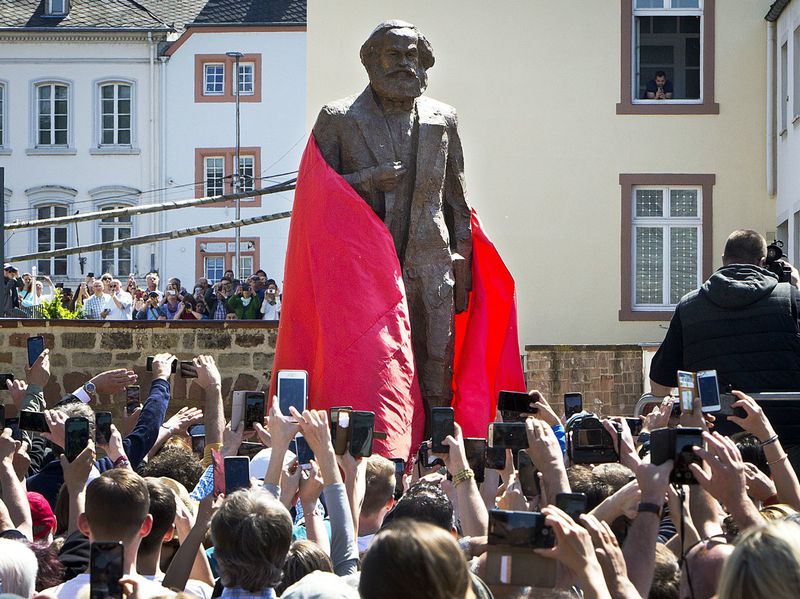Karl Marx
Written: by Marx 1863 – 1878 and edited for publication by Engels in 1885;
Published: this revised second edition in 1893;
Source: Progress Publishers, Moscow 1956, translated by I. Lasker;
Transcribed for the Internet: by proletarian revolutionaries in the Philippines;
HTML mark-up: in 1997 for MEIA by Doug Hockin;
Proofread: and corrected by Chris Clayton 2007.
Thanks to: www.marxists.org
Table of Contents
1885 Preface (Frederick Engels)
1893 Preface to the Second Edition (Frederick Engels)
Part One:
The Metamorphoses of Capital and their Circuits
Chapter 1: The Circuit of Money-Capital
1. First Stage. M-C
2. Second Stage. Function of Productive Capital
3. Third Stage. C’-M’
4. The Circuit as a Whole
Chapter 2: The Circuit of Productive Capital
1. Simple Reproduction
2. Accumulation and Reproduction on an Extended Scale
3. Accumulation of Money
4. Reserve Fund
Chapter 3: The Circuit of Commodity-Capital
Chapter 4: The Three Formulas of the Circuit
Natural, Money and Credit Economy
The Meeting of Demand and Supply
Chapter 5: The Time of Circulation
Chapter 6: The Costs of Circulation
1. Genuine Costs of Circulation
(a) The Time of Of Purchase and Sale
(b) Book-keeping
(c) Money
2. Costs of Storage
(a) Formation of Supply in General
(b) The Commodity-Supply Proper
3. Costs of Transportation
Part Two:
The Turnover of Capital
Chapter 7: The Turnover Time and Number of Turnovers
Chapter 8: Fixed Capital and Circulating Capital
1. Distinctions of Form
2. Components, Replacement, Repair and Accumulation of the Fixed Capital
Chapter 9: The Aggregate Turnover of the Capital Advanced. Cycles of Turnover
Chapter 10: Theories of Fixed and Circulating Capital
The Physiocrats and Adam Smith
Chapter 11: Theories of Fixed and Circulating Capital. Ricardo
Chapter 12: The Working Period
Chapter 13: The Time of Production
Chapter 14: The Time of Circulation
Chapter 15: Effect of Turnover Time on Magnitude of Advanced Capital
1. The Working Period Equal to the Circulation Period
2. The Working Period Greater Than the Period of Circulation
3. The Working Period Smaller Than the Circulation Period
4. Conclusions
5. The Effect of Change of Prices
Chapter 16: The Turnover of Variable Capital
1. The Annual Rate of Surplus-Value
2. The Turnover of an Individual Variable Capital
3. The Turnover of Variable Capital from the Social Point of View
Chapter 17: The Circulation of Surplus-Value
1. Simple Reproduction
2. Accumulation and Reproduction on an Extended Scale
Part Three:
The Reproduction and Circulation of the Aggregate Social Capital
Chapter 18: Introduction
1. The Subject Investigated
2. The Role of Money-Capital
Chapter 19: Former Presentations of the Subject
1. The Physiocrats
2. Adam Smith
(a) Smith’s General Points of View
(b) Adam Smith Resolves Exchange-Value into v+s
(c) The Constant Part of Capital
(d) Capital and Revenue in Adam Smith
(e) Recapitulation
3. Later Economists
Chapter 20: Simple Reproduction (Part 1 of 4)
1. The Formulation of the Question
2. The Two Departments of Social Production
3. Exchange Between the Two Departments: I(v+s) against IIc
4. Exchange Within Department II. Necessities of Life and Articles of Luxury
5. The Mediation of the Exchange by the Circulation of Money
(Chapter 20: Simple Reproduction (Part 2 of 4))
6. The Constant Capital in Department I
7. Variable Capital and Surplus-Value in Both Departments
8. The Constant Capital in Both Departments
9. A Retrospect to Adam Smith, Storch and Ramsay
10. Capital and Revenue: Variable Capital and Wages
(Chapter 20: Simple Reproduction (Part 3 of 4))
11. Replacement of the Fixed Capital
(a) Replacement of the Wear and Tear Portion of the Value in the Form of Money
(b) Replacement of Fixed Capital in Kind
(c) Results
(Chapter 20: Simple Reproduction (Part 4 of 4))
12. The Reproduction of the Money Material
13. Destutt de Tracy’s Theory of Reproduction
Chapter 21: Accumulation and Reproduction on an Expanded Scale (part 1 of 2)
1. Accumulation in Department I
(a) The Formation of a Hoard
(b) The Additional Constant Capital
(c) The Additional Variable Capital
2. Accumulation in Department II
(Chapter 21: Accumulation and Reproduction on an Expanded Scale (part 2 of 2))
3. Schematic Presentation of Accumulation
(a) First Illustration
(b) Second Illustration
(c) Replacement of IIc, in Accumulation
4. Supplementary Remarks

